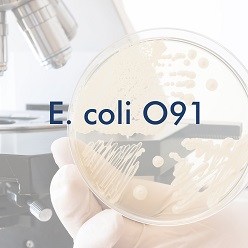In Aug. 2008, 26-year-old Chad Ingle had a meal at the Country Cottage in Locust Grove, Oklahoma, a popular family-owned buffet-style restaurant.
 Nine days later, Chad was dead from E. coli O111.
Nine days later, Chad was dead from E. coli O111.
By the end of the outbreak, 341 people had been sickened with E. coli O111, all from eating at the country diner in a town of 1,423 people.
A paper describing the investigation was published in 2011 in Epidemiology and Infection and concluded from epidemiological evidence the outbreak resulted from cross-contamination of restaurant food from food preparation equipment or surfaces, or from an unidentified infected food handler.
Ethan Hutchins of ABC News writes that at first glance Machaela Ybarra is a typical 12-year-old going through the struggles any pre-teen faces. But like the words on the pages of her textbooks, Machaela has a story to tell, a story she only wishes was fiction.
“Whenever I understood what happened to me, I couldn’t believe it,” said Ybarra.
Machaela was just 2 when she contracted E. coli. It happened at Country Cottage restaurant in Locust Grove.
A Sunday afternoon lunch nine years ago changed Machaela’s life forever.
“It sounds scary even though I don’t remember much,” said Ybarra.
Her mother will never forget that day. Christina Ybarra still knows what her daughter ate: Fried chicken, meatloaf, green beans, mashed potatoes and gravy.
“It was a buffet so we went and got one plate, her and I both ate off of it and I didn’t get sick at all,” said Christina Ybarra.
It’s a miracle, she says, since Christina was seven months pregnant at the time with Machaela’s little sister.
Of the hundreds who got sick from E. coli, one person died. The restaurant closed, but was back in business two months later, and now years later Country Cottage remains open. Folks here in town say they still eat here, not blaming the restaurant for those dark days years ago.
No one in Locust Grove at the restaurant or even with the city likes to talk about the outbreak. It’s fair to say, it’s a bad time most people there would like to forget.
But for Machaela, there are daily reminders.
“I’m on seizure medication because I can just stare sometimes and just be unconscious,” said Ybarra.









